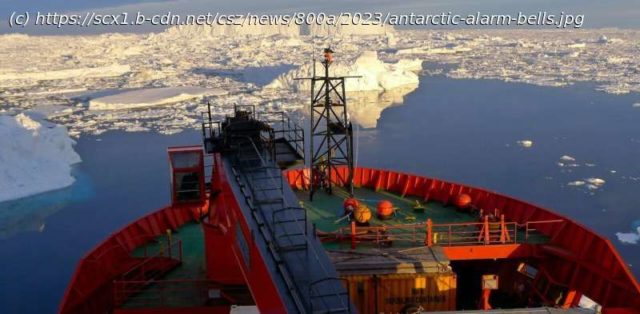Antarctica sets the stage for the world’s greatest waterfall. The action takes place beneath the surface of the ocean. Here, trillions of tons of cold, dense, oxygen-rich water cascade off the continental shelf and sink to great depths. This Antarctic « bottom water » then spreads north along the sea floor in deep ocean currents, before slowly rising, thousands of kilometers away.
Antarctica sets the stage for the world’s greatest waterfall. The action takes place beneath the surface of the ocean. Here, trillions of tons of cold, dense, oxygen-rich water cascade off the continental shelf and sink to great depths. This Antarctic « bottom water » then spreads north along the sea floor in deep ocean currents, before slowly rising, thousands of kilometers away.
In this way, Antarctica drives a global network of ocean currents called the « overturning circulation » that redistributes heat, carbon and nutrients around the globe. The overturning is crucial to keeping Earth’s climate stable. It’s also the main way oxygen reaches the deep ocean.
But there are signs this circulation is slowing down and it’s happening decades earlier than predicted. This slowdown has the potential to disrupt the connection between the Antarctic coasts and the deep ocean, with profound consequences for Earth’s climate, sea level and marine life.
Our new research, published today in the journal Nature Climate Change, uses real-world observations to decipher how and why the deep ocean around Antarctica has changed over the past three decades. Our measurements show the overturning circulation has slowed by almost a third (30%) and deep ocean oxygen levels are declining. This is happening even earlier than climate models predicted.
As the flow of bottom water slows, the supply of oxygen to the deep ocean declines. The shrinking oxygen-rich bottom water layer is then replaced by warmer waters that are lower in oxygen, further reducing oxygen levels.






